Wine from Roero DOCG
The region to the north of the Tanaro River and of Alba, in a mirror-image position to the legendary hills of the Langhe, has struggled to find its own wine identity. The Roero, for soil and climate reasons, is in fact the land of a Nebbiolo that is more ready, less structured and less suited to ageing than that of the Langhe, even though it is endowed with a pleasant softness and persuasive tannins. The establishment of a denomination dedicated to this region initially had the aim of promoting and enhancing this "different" Nebbiolo, a faithful companion of simple meals and subject to refinement of more than thirty months in the riserva type: this demonstrates that some of the crus in this area, cultivated with the right yields and severe selection, can compete with the great reds of the surrounding area.


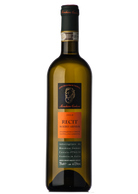


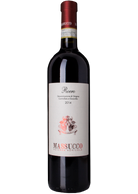



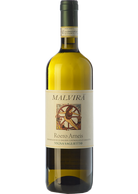




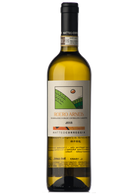

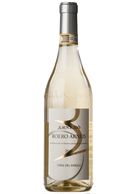
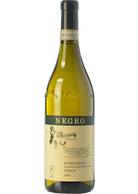




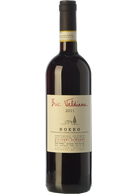



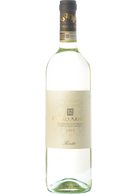






Roero DOCG
The region to the north of the Tanaro River and of Alba, in a mirror-image position to the legendary hills of the Langhe, has struggled to find its own wine identity. The Roero, for soil and climate reasons, is in fact the land of a Nebbiolo that is more ready, less structured and less suited to ageing than that of the Langhe, even though it is endowed with a pleasant softness and persuasive tannins. The establishment of a denomination dedicated to this region initially had the aim of promoting and enhancing this "different" Nebbiolo, a faithful companion of simple meals and subject to refinement of more than thirty months in the riserva type: this demonstrates that some of the crus in this area, cultivated with the right yields and severe selection, can compete with the great reds of the surrounding area.
In fact, the creation of the DOC Roero, now DOCG, has done nothing more than bring into the limelight a great white grape variety, Arneis, which is typical of the area (but can also be found in the Langhe) and which combines a good softness and fragrance with an agile, dynamic, fresh and ready structure. And so, although many Roero Rosso Riserva now are reminiscent of the complexity and depth of many other Langhe reds, the great wine of the region is Arneis.
A pleasant, successful white, straw-coloured to the eye and intriguing on the nose for its notes of white flowers, herbs, apple and peach. Initially, Arneis was considered a ready-to-drink wine, immediate and unpretentious. This feature of the wine, which today has proved to be its strength, tells us only part of its potential. Certainly Arneis produces white wines with a straightforward minerality, with good fruit, beautiful freshness and flavour, elegant vegetal notes and fragrant herbaceous aromas.
There is always an inviting aromaticity to counterbalance this, making this much-appreciated Piedmontese white an excellent aperitif wine. But that's not all. By picking the right grapes at the right time of ripeness in the vineyard and working more carefully in the cellar, the quality of the wine has undoubtedly increased, allowing it to compete with the best Italian whites: this is a new sensibility that has been associated with Arneis for about twenty years, and which has allowed it to become a pioneer in the rediscovery of Piedmontese white wines.
The peculiarity that characterises the Roero is to be found in the lean, sandy soil between high hills and ups and downs, where the vines, grown on average between 250 and 350 metres above sea level, find excellent exposure to sunlight. The classic Arneis zone, where the vine is said to have originated and where it is still popularly identified as “Nebbiolo bianco”, is that of Canale and the neighbouring municipalities.
It is here, on clayey-calcareous soils, that the mythical Vigneto Renesio is found, which according to some is the origin of the name of the Arneis vine (formerly known as “Ornesio”) and where the cultivation of this grape has been attested to since the 15th century: a sign that this Piedmontese white wine has all the credentials to be considered a grand cru wine.
The name Roero originates from the noble Asti family of the Roero Counts who, from the late Middle Ages until the 18th century, dominated these hills characterised by chestnut, hazelnut and fruit groves. The famous rocche del Roero are the deposits of aeolian and fluvial origin, with the presence of red clayey-sandy soils, that characterise the Roero side of the Tanaro river. The Roero has varied soils, but in general are excellent for both whites and reds.
The Roero soil is generally of the marl-arenary type, with a prevalence of sandstone, sedimentary rocks of marine origin, and a good amount of limestone, clay and sand, the latter of which makes the soil loose and gives it softness and great permeability. Because of their marine origin, the soils in which the vines are grown are rather poor in organic matter but rich in mineral salts. Added to this is the climate, which is relatively dry and, above all, rich in significant day/night temperature differences: ideal ingredients for white wines with a marked minerality, aromatic elegance and saline finesse. Usually vinified and aged in steel only, sometimes with a prolonged period on the lees or in the bottle, Arneis is not at all averse to partial evolution in wood or a little maceration on the skins. There is no shortage of producers who are pioneering spumante and raisin wine versions.





